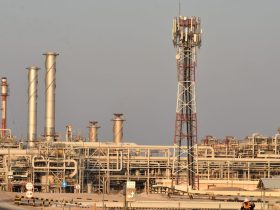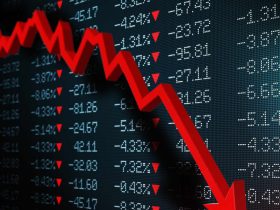Oil futures went on a third quarter tear that put crude within spitting distance of the $100-a-barrel threshold as September comes to an end, extending a breakneck rally that’s sent shock waves through global financial markets.
Here’s a quick reminder of the main drivers of the surge, courtesy of Robert Yawger, executive director for energy futures at Mizuho Securities:
Saudi production cut
At the top of the list is the June announcement by Saudi Arabia that it would unilaterally cut oil production by 1 million barrels a day. The cut, which was subsequently extended through August and September and then “expertly rolled” through the remainder of 2023 has been the main catalyst for the rally, Yawger said in a Thursday note.
No cushion in Cushing
Tight domestic supplies in the U.S. are ringing alarm bells. Crude inventories last week fell to 413.3 million barrels, the lowest since Dec. 2, the Energy Information Administration reported Wednesday.
The focus, however, is on supplies at Cushing, Oklahoma — the delivery hub for New York Mercantile Exchange oil futures. They dropped to 21.958 million barrels, the lowest since July 2022. Storage at Cushing hasn’t dropped below 20 million barrels since 2014, and there are jitters over the prospect for operational difficulties at the largest U.S. storage facility due to a loss of pressure if drawdowns continue, Yawger said.
Profitable products
Big profits on refined products have led the way higher for much of the rally, Yawger noted. Traders focus on the “crack spread,” which measures the difference between the purchase price of a barrel of crude and the products, such as gasoline and diesel fuel, that can be refined from it. The wider the crack spread, the more demand from refiners for crude to turn into products.
The heating-oil crack spread traded to a nine-month high of $58.17 a barrel on Aug. 25 and remained “supersized” above $50 a barrel through mid-September, he said. The analyst noted that products, however, have been left behind by crude more recently, with the heating oil crack falling to a two-month low of $40.595 on Wednesday.
Speculators dive in
Speculators continue to rush into crude, with so-called commitments of traders data from the government showing net long speculative contracts at 294,396 as of the week ending Sept. 19, Yawger observed. He expects that figure to rise further when the next update is released on Friday.
Extreme speculative positions, of course, can be viewed as a contrarian indicator, and can make for a sharp reversal in direction if speculators are forced to liquidate positions.
The oil rally was taking a breather at the end of the week, but only after West Texas International crude for November delivery
CL00,
CL.1,
CLX23,
the U.S. benchmark, traded as high as $95.03 a barrel during Thursday’s session. WTI ended Wednesday at its highest since late August of 2022. Brent crude
BRN00,
the global benchmark, briefly topped $97 a barrel Thursday morning after ending the previous session at its highest since November.
Both WTI and Brent were lower for a second day on Friday, but were set to book a fourth straight monthly gain.
Crude’s rally, with its implications for inflation, has been cited as a factor in a run-up in Treasury yields and the U.S. dollar, which in turn have contributed to volatility in stocks, with major U.S. benchmarks
SPX
DJIA
on track for a losing September and quarter.
Read the full article here











Leave a Reply